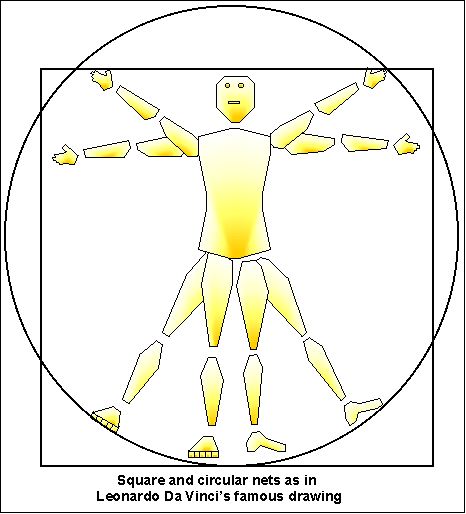
Planar networks have a long tradition of use for defining body proportions by artists (Heydenreich, 1928, p. 110; Strauss, 1974, pp. 2426 2477; Ghyka, 1977, pp. 97-109; Doczi, 1981, pp. 93 143).
|
Planes
|

Planar networks have a long tradition of use for defining body proportions by artists (Heydenreich, 1928, p. 110; Strauss, 1974, pp. 2426 2477; Ghyka, 1977, pp. 97-109; Doczi, 1981, pp. 93 143). |

Planar networks which have a long tradition of use for defining body proportions by artists (Strauss, 1974, pp. 2426 2477; Ghyka, 1977, pp. 97 109; Doczi, 1981, pp. 93-143). |

The architect and painter 'Le Corbusier' used a frontal planar net as a "grid of proportions", "designed to fit the man placed within it" and provide a body-scaled measurement system (Le Corbusier, 1980, pp. 37-58). |

When the arms and legs are no longer in the same plane then the planar spatial form molds into a plastic volume, the most simple is conceived in choreutics as a tetrahedral net with four limbs or four proximal joints each at one of the four tetrahedral vertices (Laban, 1966, pp. 18 21; Bartenieff & Lewis, 1980, pp. 97 99, 113). |